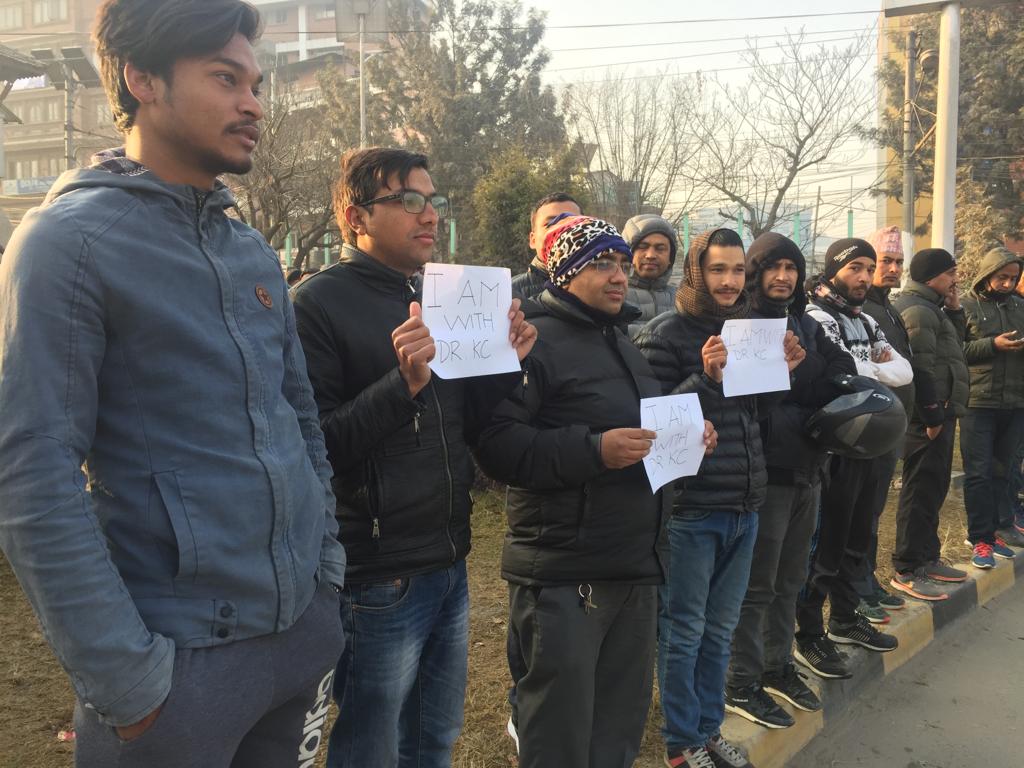Nepal Politics
Youth Participation in Politics: Shared vision and sustainability of federalism in Nepal

Youth protests in Nepal
© Picture credit : Gaurav Pokharel (hamrakura.com)Across the world, the youth has played a historically significant role in major political revolutions. What has also been seen is those young people who frequently lead protests but are not later included informal political proceedings are left frustrated, resulting in destabilization of the democratization process, which later leads to conflicts. To avoid adversities in the political and civil environments of a nation, encouraging the active participation of young people in these processes is thus necessary. This is the only way to frame a shared vision within a country.
Political transitions in Nepal have been a recurrent phenomenon. Since the 1950s, Nepal has witnessed major revolutions and regime changes every ten years – encompassing the Rana regime, one of democracy, the panchayat era, one of multi-party democracy, one involving the abolition of the monarchy, and another of federalism. One of the fundamental factors behind these frequent transformations has been the inability of the general populace to realize tangible benefits from the existent political system in the country.
Nepalese youth have always been at the forefront of these revolutions – they have fought at the frontline with the hope of reforms, to facilitate positive changes in society. However, the political representation of the youth in formal politics remains limited. Conventional political parties have, for a long time, used their young cadres in all political struggles, only to leave them out of proportional engagement in leadership roles, be it in parties or in governance. To this day, only 5 percent of the Nepali youth is represented in the federal parliament, as opposed to the global average of 13.5 percent. This is despite the fact that the definition of youth encompasses individuals between 16 to 40 years of age in Nepal, whereas a majority of countries including India, China, Pakistan, and the UK has limited the age of youth to 29; some countries, like Bhutan and the USA, have limited the definition to those below 25. This implies that the hopes and aspirations of young people regarding their economic development and Nepal’s future have never been translated into the national political agenda. The under-representation of youth in formal politics is a manifestation of top leaders’ parochial attitudes.
The low participation of youth in formal politics is attributable to several factors, amongst which specific legal provisions of the country and the unwillingness of political leaders to hand over leadership roles to the young are the foremost. The legislations state that an individual can contest in local elections only from the age of 21 and must wait until s/he reaches 25 years to contest provincial and federal elections. Furthermore, for an individual to be a part of a constitutional committee, s/he needs to be 45 years of age. In other words, the constitution of Nepal does not favor youth participation. The legislation also sets a convenient pretext for politicians to continue to be engaged in politics post-retirement. Consequently, Nepal is led by septuagenarian leaders; perhaps they’ve designed the system thus to serve their own political interests.
Around the globe, the youth are encouraged to participate in political processes, and numerous steps are taken, such as disseminating information on their rights to be involved in political processes, their training and their involvement to equip them for decision making. However, the same actions are absent in Nepal. For many youths, the idea that they can influence decisions made by the government seems too abstract, and the issues that engage and concern adults seem out of reach and (in many cases) irrelevant to their current lives. This has adversely affected political participation and awareness amongst the younger generation – often resulting in lesser engagement of the youth in political discourse and voting.
Federalism has provided Nepal a chance to change this and incentivize higher youth participation in politics. There are currently 36,000 elected representatives in local units alone. This can be viewed as a dividend of federalism, whereby Nepal can test its youth as well as train them for higher levels of political participation and decision-making. In fact, political representation of youth in local elections has been noteworthy. The May 13 local elections saw 41% youth participation in terms of candidacy. However, Nepal would do well to incentivize greater youth participation, with that of youth under the age of 30 standing at a mere 15.32 percent. This is very important for the sustainability of our federalism.
As representatives of the political system, youth is a quintessential aspect of modern democracy. Engaging young people in formal political processes certainly help shape politics in a way that contributes to the building of stable and peaceful societies that promptly respond to the needs of the general populace; the younger generation usually fosters its own unique and innovative strain of thinking, being full of energy as well as a passion for contributing to the improvement of its respective countries.
At Samriddhi Foundation, we realize the importance of working with the youth and helping them prepare themselves for political participation. We have developed a number of avenues to practice this philosophy. We engage them in Socratic discussions of liberal values like skepticism of power, individual freedom, rule of law, private property rights, markets, and competition so that they can bring an alternative lens to the development discourse. We also engage them in regular dialogues on contemporary policy processes so that they can test their ideas among political and apolitical leaders. We bring together young thinkers to informal discussion tables and help them exchange their ideas with each other to promote collective learning. A host of such youth-centered activities showcases our humble efforts to create a pipeline of educated and capable young individuals who could be leaders and change-makers tomorrow.
